As an Amazon Associate I earn from qualifying purchases.
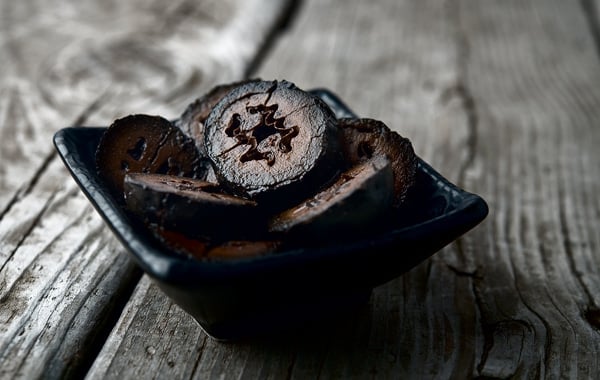
There may be a few foods that are more English than pickled walnuts, but with the possible exception of fish and chips, I can’t think of one. Chances are, however, you’ve never heard of them. I hadn’t, until several years ago when I ordered the meat-and-cheese plate at a local Irish place called deVere’s.
On this place was a black disk. I asked the waitress what on earth it was, and she smiled; she’d had this question before: “It’s a pickled walnut. It’s good with the cheddar.”
I followed her advice and stabbed the disk with my fork, adding a bit of cheddar cheese and a bit of cold roast beef to round things out. Wow. It was a bit like eating solid steak sauce, with a little floral aroma and a zephyr of bitterness that just barely let you notice it.
I ate another disk all by itself: Fairly soft, puckery and strangely floral. And yes, there was definitely a Worcestershire-Heinz 57-A1-thing going on here. How had I never had these before?
Turns out that very, very few people outside of Britain eat them. This should change, which is why I am presenting you with this recipe. And the reason I am posting this now is because you need to get out and get your walnuts now. That’s right, you need green, unripe walnuts to make pickles. And yes, you use the whole thing, hull and all.

I got mine a few weeks ago, after an unsuccessful fishing trip with my friend Joe. We were in the Delta and as we were driving out, I noticed a NorCal black walnut (Juglans hindsii) absolutely laden down with nuts. “Pull over!” Joe, used to this by now, did. I gathered about 150 nuts in less than 15 minutes. It was a bonanza.
I knew I was in business right when I got to the tree, but just to be sure I pulled out my pocketknife and sliced an unripe nut in half. You need to do this, either with a knife or a stout needle or a long nail, because you have to catch the unripe walnuts before the shell forms. Once that shell forms inside the walnut’s hull, you’re too late; the traditional harvest date in England is late June.
The process for pickled walnuts is not hard at all, but it takes more than a week. You need to brine the green walnuts for a good long time before they will be ready to pickle properly. The brine time helps with preservation and removes some of the bitterness in the unripe walnuts. Once brine pickled, they are pretty durable.
Do you need to sun-blacken the walnuts? No, but doing so gives you a nice, uniform look to them. Otherwise they will be olive green in some places, blotchy black in others.
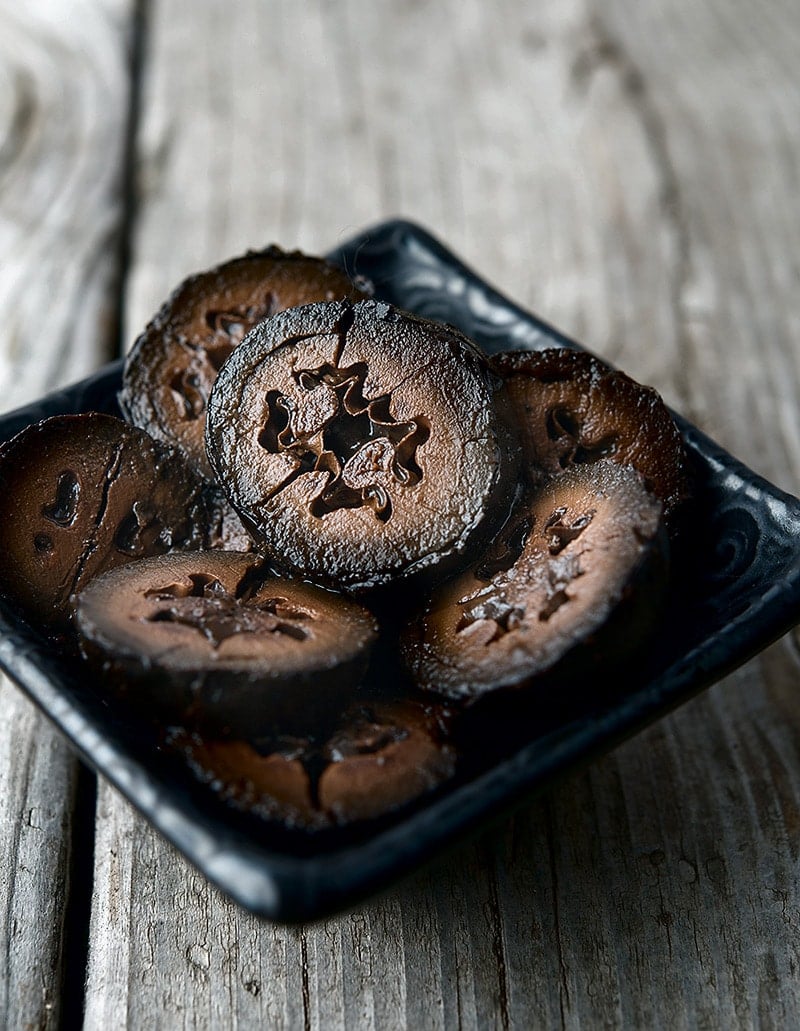
Once you have your pickled walnuts, what do you do with them? Look to the English. Traditionally they are part of a ploughman’s lunch, with other pickles, cheese and cold meats. But I see them a lot tossed into beef or lamb stews (pot pies and pasties, too!) in wintertime, and in summertime I’ve seen them served in cool salads alongside tomatoes, and accompanying shellfish such as scallops or shrimp.
Pickled Walnuts
Ingredients
- About 50 to 60 green, unripe walnuts
- 1/2 cup kosher salt
- 1/2 gallon water
- 2 quarts cider or malt vinegar
- 1 tablespoon cracked black pepper
- 1 tablespoon cracked allspice berries
- 1 ounce ginger, about 1 1/2-inch pieces, smashed
- 1 cup brown sugar
Instructions
- Dissolve the salt in the water to make a brine. Put on some rubber gloves if you have them, because walnut juice will stain your hands for weeks -- and it won't come off. Trust me on this one. Properly gloved, stab each walnut with a fork in several places; this helps the brine penetrate. Submerge the walnuts in the brine and let them ferment for 8 days at room temperature.
- Remove the walnuts and put them on a baking sheet and leave them outside in the sun for a day, until they turn uniformly black. You can do this step without gloves if you want.
- Pack the walnuts into quart jars. Bring the remaining ingredients to a boil and pour over the walnuts. Leave very little headspace in the jars. Seal and keep in a cool place, either the fridge or a basement -- you just want them to rest below 70°F -- for at least a month before you eat them. Kept this way they will last a year.
Notes
Nutrition
Nutrition information is automatically calculated, so should only be used as an approximation.

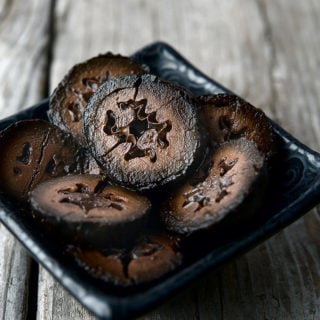

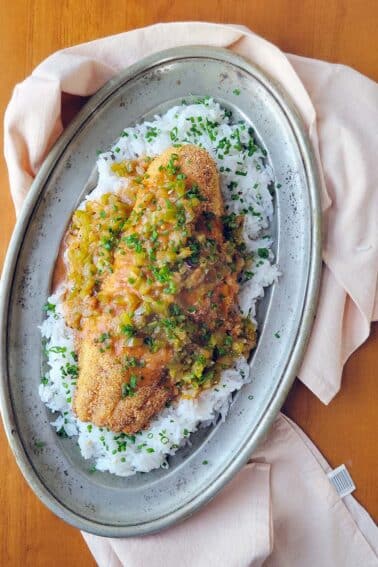
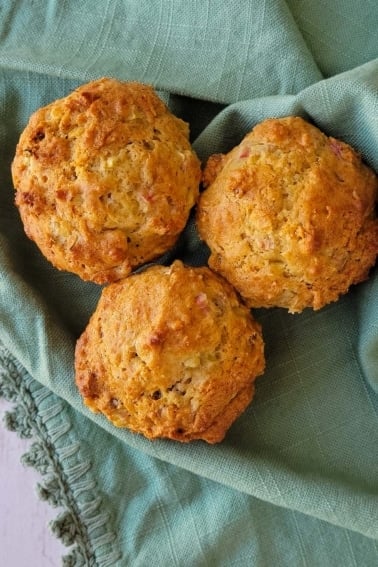

Very interesting.
We have something similar in my home region in Germany (the Palatinate or in German Pfalz). Though the flavoring is definitely different, more on the sweetish side usually, and the process is much much longer with min. 2 weeks of active work and then about 6 months of waiting.
And because it is so much work its very hard to get them, usually the few that are sold can only be found until Christmas and then they are sold out. But they are so good, the process is definitely worth it. Then they are sliced as fine as possible and eaten either savory with cheese or venison or sweet with ice cream or quark. Hach… now I really want to test these two recipes to compare.
Hi.
Can I just check, you use water and salt for the first stage….do you add any water to the 2nd stage? Thanks!
Marie: Can I ask where you are trying to pickle walnuts now? This is something done in late spring or very early summer. Are you in Australia?
Hi. I’m in the UK, I’ve just stayed in Wales for a week and we found a tree full of green walnuts. Opened up quite a few, no shell at all, so I picked a load and started your process! I was pretty shocked to find them green, I thought it was too late, but they are not ripe at all!
I made mine with Wisconsin black walnuts and put them in the cellar in the dark on July 10. Temperature constant at 68 deg. I just sliced and tried one. The rind texture was almost gritty and not a good mouth feel. I spit that part out, but the unripe meat in the middle was edible. Should I just wait longer? I followed your recipe exactly, except for walnut origin. Thanks
Mary: If it was gritty you were probably too late, and the shell had started forming. I make these pickles in May here in California. July sounds very late to start.
I’m quite late but wanted to say that Mary, I’ve heard others report a gritty result with black walnuts, I usually try to use young green English walnuts if you’re able to get them. I have both types of trees and do make a very nice liquer (nocino) with either/both black and english, but only pickle the english walnuts.
When I was a girl, my mom made pickled walnuts using big crocks. I loved them with steaks and on cheese and cracker appetizers she’d serve guests. Her recipe was similar to yours only it was scaled for 100’s of walnuts! The original recipe she used came from an old cookbook (Mrs. Beeton’s) given to my grandmother in the 1800’s. My grandmother made some changes to the original and my mom continued making them her way. Mom canned them and gave them away as gifts for family members and they were cherished by everyone. Thanks for sharing this recipe!
I have found putting them in brine for 1 week-10days; then putting them in vinegar for a few days, say 3-4; then exposing them, semi pickled, to sunshine/light until black; THEN putting them in jars , malt vinegar with some chilli flakes and cloves + cumin powder (all sparingly but to taste.) Now, these DO taste of something other than soggy cardboard and vinegar! The chilli is important as it brings out the walnut taste with it.
I’m currently pickling my walnuts – I’ve had them in salt water which I’ve changed and about to take them out and dry them in the sun to go black. I’ve just taken the lid off the bucket that they are in and find the salt water has mould on the top of it. Can I still use the walnuts or should I bin the lot?
Jules: You should be OK, but remove all the mold and change the brine.
thanks for the ideas, just picked nearly 200, will try your receipe tomorrow. wondering if the twice brining method is worth it or not?
It’s the 27th June and I have just picked green walnuts from the local park here in East Yorkshire , England , and will start the brining process today as I do every year . I have experimented with the recipe for the pickling liquor over the years – last year I put too many cloves into the pickle and the taste was overpowering ! I have always brined the walnuts twice – rinsing them in fresh water between the brinings as this is supposed to remove the bitterness ( it’s a bit of a faff but supposed to be worth the effort
I will report back on this year’s East Yorkshire attempt
hi, how long for each brining? thanks
So I probably picked them a little too early as last year, the shells had already formed and it was a wasted effort. But: I have brined them for 10 days, then sunblackened them for 2 and then put them in the pickling liquid. I have tried the first one last week. They are already nicely soft and very aromatic. I made 3 small jars and doubt they’ll last until Christmas…
I’ve also got my French neighbour and my German friend totally hooked. ??
Thank you so much!
I picked my walnuts on 21st June and they have had 2 weeks in brine (changed after a week) and 2 days in the sun so they are really black now. When I picked them, they were soft all through and easy to cut but, during the 2 weeks in brine, they seem to have developed a slightly hard shell so there is some resistance when I cut them. Will this soften during the pickling process, or should I have picked them earlier? I am in Sussex. This is the first crop from our tree which we planted from a walnut picked in France 15 years ago.
Gill: It should soften a bit in pickling. I live in California, so our schedule is a little different from yours, so I can’t really help too much with advice on timing.
Just gave your recipe a try with English walnuts from trees in Liguria; thank you for sharing. We had a decent crop this year. Since you use the walnuts at the same stage as for making nocino, I’ve got both going at the moment. Will let you know how they turn out before I rate the recipe. I have never tasted pickled walnuts before. If anyone is interested, here is a link to an English translation for traditional nocino: http://www.ordinedelnocinomodenese.it/index.php/2017/06/26/recipe-english-version/
OK – I’ve returned to rate the recipe – and I give it full marks. I was recently in Scotland and found commercially prepared pickled walnuts at a Tesco supermarket. I had never tasted them before. They were quite mushy but not bad. It’s been only 15 days or so since I put mine under the pickling liquid but I tried them today. They came out just like the pictures in this recipe – much prettier than the ones purchased at Tesco. They were stored in the dark in a coolish place 20-22 C) and I was surprised they were already done. The sun treatment did indeed turn them unifirmly dark. The ones from Tesco were mottley green. The only changes I made to this recipe were to use 1/2 as much vinegar (because that’s all I had), and I ommitted the ginger and allspice. They are still plenty acidic from the vinegar. The taste is remarkably similar to the comercial product. I must admit, they really do smell like steak sauce! My wife claims that they taste only like the pickling liquid and she is put off by the mushy texture. They are certainly not for everybody… but I’ll eat them. They are not bad by themselves and do go nicely with cheese. I’m not a meat eater but I’m sure they would go nicely with meat as well.
Thank you for the recipe!
I tried this recipe last year. Living in the southern part of italy we have a lot of walnut trees but no-one has ever heard of pickling them! Instead they make liqueur. However, when I picked them last year on 23/5, the shells had already formed underneath (I didn’t believe that on this date they could be too late already so went through the whole process only to throw them out in November.)
This year, we have had a longer, colder Spring and they seem to be perfect having been picked on 21/5 this year. Brined and sun-dried, I will be pickling them tomorrow and look forward to a tasty result in the Autumn. Thank you.
Don’t forget to wear gloves as suggested when pricking and brining
I now have a black walnut stained hand
Well but what a badge of honor, and conversation starter! 🙂
Thanks so much for your recipe, at long last I will do it the right way! Well, you’ll have a good laugh, we live on the Mosel in Germany and when our family in England visit I ask them to to bring pickled walnuts. This year with Covid we had no visitors so I decide to make my own. We are surrounded with walnut trees and people come from miles around, even people from Holland.
I used some walnuts in their shells (first mistake!) and bottled them in vinegar together the vinegar from the jar we had just finished.
I put the jar in a dark cupboard and today, 4 months later, opened the jar! They looked just as fresh as when I bottled them!!! Now, thanks to your information, I will collect them next season complete outer husk and follow your lead!
I am an expat Brit living in Canada and I just love pickled walnuts. I think it is too late now but I have a large bin full of walnuts from our walnut tree. When would I start this wonderful recipe next year.? We live in Southern Ontario.Canada.
Thank you
Marg Bush
Marg: Probably late May to June. You do it with green, unripe walnuts.
I picked the black walnut in mid-may. I put cut the end off a pricked each nut. I put them in a salt brine for one week , drained the brine and repeat for another week. I put them on a sheet pan to dry . Once dried I put them in jars and poured the pickling brine in. I put them in the refrigerator for 3 weeks. I tried one today, they were not soft and a little hard. What went wrong???
3 weeks is optimistic. We pickle in July so they are ready to eat at Christmas. Give them more time.
A year or two improves them!
Just starting to process 91 ( 1.1 k)
little ones from Somerset for this years stock
Roger
Thanks for this recipe. I’m done soaking them in the brine and they are drying in the sun. Nice and black, but pretty hard. Will they soften up once I put them in jars with the pickling spice? They were at the right stage when I picked them I think (shell not formed).
I live in Germany and am on a caravan holiday in Bavaria. I’ve been allowed to pick 16 young walnuts from trees at the campsite.
So I’ll be trying out your recipe.
Pickled walnuts are also a speciality of the Rhineland Palatinates – so not an exclusive British tasty morsel.
As I can’t get malt vinegar in Germany I will either use Italian balsamic or maybe a local southern German cider vinegar.
Hope it works. I’ll let you know.
You can get malt vinegar from amazon
balsamic vinegar would overpower them ,i would use cider vinager
Hey! Should I refresh the pickling liquid? Thank you!
I arrived home after a heavy rain to branches in the road and on the lawn
as well as lemon sized black walnuts dotting my lawn in Virginia.
Are they too overgrown for this recipe? I’m fascinated they can be pickled
but wondered a couple of things.
The nutrition says: 9 Carbs and 2272 Sodium. (gasp!)
Is that for one walnut only? ….. (without consuming the pickling juices).
They await in a bowl.
Thank you for creating this culinary dimension,
Deb
Deb: That’s for the whole batch. The online nutrition calculators are wonky. As for ripeness, they are OK if you can easily slice them in half. If they are crunchy in the center, i.e., the shell is forming, it’s too late.
I’ve had the the black walnuts which were picked the 3rd week in June. They’ve been in a brine for 2 weeks, changed the brine twice. I’m ready to pickle them but I thought they might be softer and blacker after 2 weeks. Are they ready to pickle?
Hanna: They turn black with exposure to air.
The time is now!!!
I will try both juglans nigra and juglans regia versions, but was wondering if anyone had any experience woth the former?
Also, pick more and make nocino!
Frank, I picked walnuts today for Nocino, found this recipe for pickled & will be going back tmrw for more walnuts! ?
Am in the NW & they seem to be ready later than, say, California & other warmer climates.
Hank, thanks for posting recipe!
So, September 5th. Trying the first of the pickled walnuts (juglans regia) on a sandwich with cheese. Tastes pickled with very little to go on in terms of walnut taste or some ‘umami’ taste which I would’ve expected with the article describing it as “like eating solid steaks sauce”. First off, I don’t put any vinegar in steak sauce!
The nut fell completely apart, impossible to get it out of the jar in one piece using a fork. It was almost possible to spread it out, like olive ‘tapenade’.
Overall not bad, but it has very little to offer taste-wise. The acidity and the spices are overpowering any specific walnut related smell/taste.